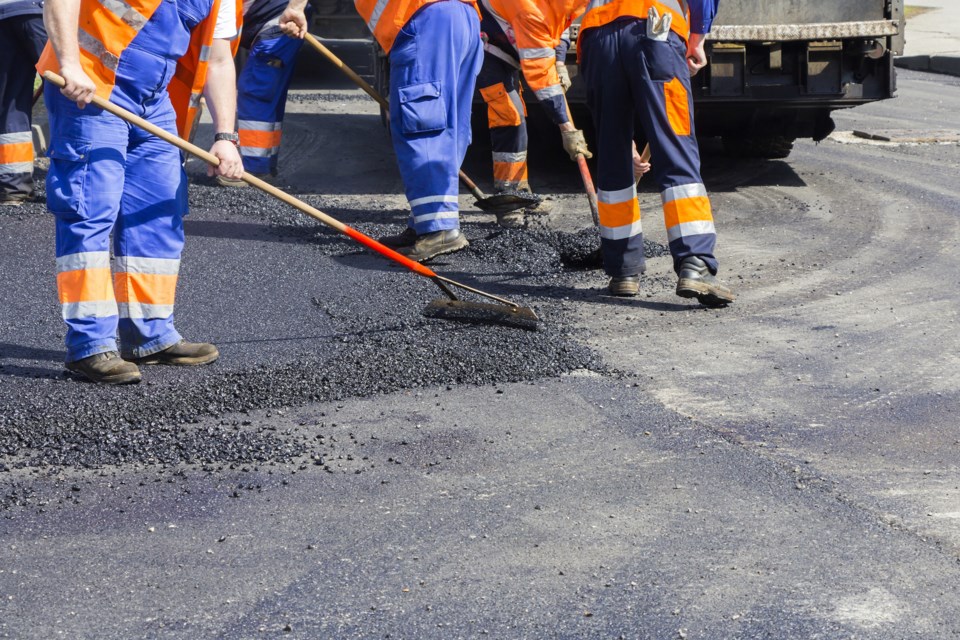City council is facing a time crunch when it comes to its plans for maintaining city infrastructure, members of the audit committee were told Tuesday.
Residents have heard for years about the widening gap between what the city should be spending maintaining infrastructure and what the city actually spends. According to the 2019 budget, that gap will grow to $3.1 billion over the next 10 years, far more than the city is currently putting aside to fund the work.
Traditionally, those concerns are talked about at budget time, and during the spring pothole season, and then are set aside. But under provincial legislation, cities not only have to put together a plan about how they propose to manage their assets, they also have to put together a realistic plan on how the work will be funded.
Ward 5 Coun. Bob Kirwan says that will leave them with a choice between raising taxes beyond reason, or changing service levels to match the funding available.
“If we're not willing to raise taxes through the roof, we have to have a plan that residents can afford,” Kirwan said. “We need to look at a plan that matches the funding we have.”
Kirwan was commenting during a debate over an audit on the state of the city's roads from Auditor General Ron Foster. Foster found that city roads crews have done a good job maintaining major arterial roads, but the state of less busy collector and local roads have deteriorated badly since 2007
Foster said his audit findings were mixed, showing success in some areas, but said the policies used by staff meant some of the worst roads were allowed to get even worse.
“We're pointing out that there are some gaps, and our current funding model tends to neglect those gaps,” Foster said.
Rather than a high-level overview of the overall condition of roads, Foster said councillors should ask for breakdowns of the state of the roads by class, so they get a better idea of the big picture.
“New asset management strategies are needed for collector and local roads,” he said. “Arterial roads have stabilized (but) we're still seeing a deterioration of some local roads.”
Foster also suggested taking a different approach to pothole repair, with more focus on patching in late summer and early fall, which would reduce the number and severity of potholes once spring arrives.
“We would hope there would be more emphasis of a capital program in the fall, rather than reactive one in the spring.”
For his audit, Foster used the pavement condition index (PCI), which is a different gauge than the city has used in the past, which focused on the overall condition of roads.
Mayor Brian Bigger said city council has been making decisions based on another measuring gauge, which showed city roads achieved a score of 51, compared to the 39 Foster found for some roads.
“I'm trying to understand why one measure ... reported that we were maintaining road conditions, but the PCI graph is reporting a decline in road conditions,” Bigger said. “We have not had that (PCI) information in the past.”
He said the city has dedicated far more money for maintaining local and collector roads this year — $9.8 million — but they need a better way of evaluating the state of the roads so they can make the best funding decisions.
“I want to see the real numbers, and I absolutely want to see the condition of the roads improved,” Bigger said.
But Kirwan said no matter what index you use, there's still going to be a huge gap between what we should be spending, and what we are spending.
And by 2024, that gap has to be eliminated one way or another.
“Our service level expectations have been way high for a long time, and our funding is not closing that gap,” he said.
Either raising taxes or lowering service expectations will be “painful” he said, and will require tough decisions by council.
CAO Ed Archer said what council is facing is something every council has faced, going back to the 1960s: more demand for road work than the city has the money to pay for.
But he said infrastructure and finance staff will work together to provide options ahead of the July 1 deadline the province set for municipalities to submit their asset management policies. A more detailed plan for maintaining roads, bridges, water and other core infrastructure is due in July 2021, ahead of the July 2024 deadline to finalize the policies – and how the city plans to pay for them.
